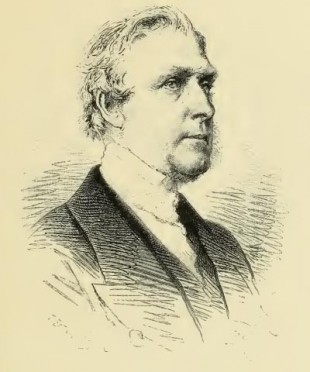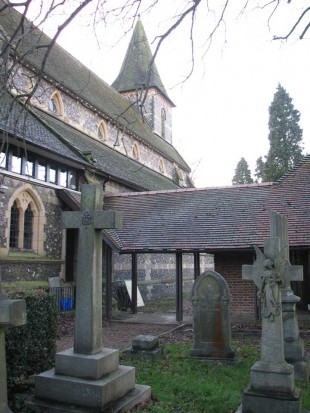…where east meets west
- Home
- Brief History
- The Greenwich Meridian
- Greenwich
(1675–1958) - Herstmonceux
(1948–1990) - Cambridge
(1990–1998) - Outstations (1822–1971)…
- – Chingford (1822–1924)
- – Deal
(1864–1927) - – Abinger
(1923–1957) - – Bristol & Bradford on Avon
(1939–1948) - – Bath
(1939–1949) - – Hartland
(1955–1967) - – Cape of Good Hope
(1959–1971)
- Administration…
- – Funding
- – Governance
- – Inventories
- – Pay
- – Regulations
- – Royal Warrants
- Contemporary Accounts
- People
- Publications
- Science
- Technology
- Telescopes
- Chronometers
- Clocks & Time
- Board of Longitude
- Libraries & Archives
- Visit
- Search
People: James Glaisher
| Name | Glaisher, James |
||
| Place of work | Greenwich | ||
| Employment dates |
11 Feb 1836 – 31 Dec 1874 |
||
| Posts | 1836, Feb 11 | Assistant (Astronomical), rising from Sixth Assistant in 1836 to Second in 1856. From Nov 1840 Glaisher was also Superintendent of the newly created Magnetic & Meteorological Department | |
| 1868, Apr 1 |
Superintendent of Magnetic & Meteorological Department only (following transfer of funding for the Magnetic Observatory from the Civil Services Estimates to the Navy Estimates) |
||
| Born | 1809, Apr 7 |
Baptised, 1809, Apr 30, St Mary's Rotherhithe |
|
| Died | 1903, Feb 7 |
||
| Family connections | Elder brother of John Glaisher (Computer). Married Cecelia Louisa Belville daughter of his colleague John Belville (also known as John Henry). His son, James Whitbread Glaisher, served on the Board of Visitors from 1886–1928 | ||
| Known addresses | 1837 |
Blissett Street (in lodgings at 12s. a week). (RGO6/72/232) | |
| 1841 | At his parents’ house in Roan Street on census night and possibly living with them | ||
| 1844–1859 | 13 Dartmouth Terrace, Lewisham (later known as 15 Lewisham Hill & demolished in the 1940s) | ||
| 1861–1893 | 1 Dartmouth Place, Blackheath (now 20 Dartmouth Hill) | ||
| 1893–1903 | The Shola, 2 Heathfield Road Croydon (now demolished) |
||
| Wealth at death | £36,027 11s 9d | Probate, 1903, Mar 9 | |
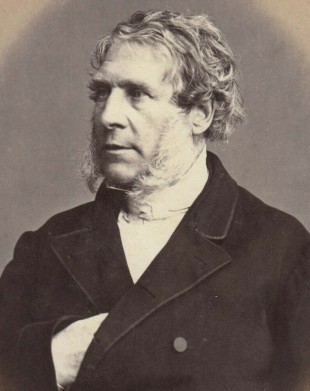
James Glaisher at the height of his fame. Whole plate albumen photograph by an unknown photographer, courtesy of The Library of Nineteenth-Century Photography
Glaisher was born in 1809 to James and Mary Glaisher of Rotherhithe, near Greenwich. Although some accounts state that his father was a watchmaker, the 1841 and 1851 censuses record him as a tailor. As a child Glaisher was a neighbour of William Richardson who is said to have introduced him to the work of the Observatory in the 1820s. From January 1829 to November 1830, he was employed as an Assistant on the Trigonometrical Survey of Ireland. In January 1833, following a recommendation by Richardson and the instrument maker William Simms, he was taken on as an Assistant by Airy at the Cambridge University Observatory.
Three weeks after Airy’s arrival at Greenwich as Astronomer Royal at the start of October 1835, the assistant, Frederick Walter Simms, resigned. On 4 December, Airy appointed Glaisher to replace him. Confirmed in post by the Admiralty on 10 December, Glaisher commenced work at Greenwich as Sixth Assistant on 11 February 1836. His pay was £100 a year plus £20 rent allowance.
In November 1837, upon representations, particularly from Glaisher about the inadequacy of the £20 rent allowance paid to the Fourth, Fifth and Sixth Assistants, the allowance was increased to £30 with effect from 1 April 1838. It remained at that level for the more junior assistants until the regrading exercise of 1871 when the allowances were abolished.
The post of Superintendent of the Magnetical and Meteorological Department was created by Airy in 1840. Its first holder was James Glaisher who was transferred from the Circle Department, in preference to giving the post to one of the longer established assistants. Originally, the Magnetical and Meteorological Observatories and the posts associated with them were intended only to be temporary. Because of this, Glaisher retained his position as an Astronomical Assistant and was paid an additional allowance of £60 a year for his responsibility as Superintendent. This was provided from a special fund provided by the Treasury under the budget for Civil Services and increased to £100 in 1847. At some point, the post of Superintendent became permanent – it’s not clear exactly when, but certainly no later than 1868 when the source of funding for the post was transferred from the Civil Services Estimates to the Navy Estimates.
Glaisher caused something of an upset at the end of 1843 when, on 31 December, he married 15 year old Cecilia Belville, the eldest daughter of the Second Assistant, John Henry Belville by his second marriage. The wedding took place by banns at All Souls Langham Place. The church register records that both Glaisher and Cecilia were supposedly residing in the parish at the time of the marriage and that Glaisher's parents were present. It also records (incorrectly) that Cecilia was 16 years of age. The first Cecilia’s father knew of the proposed marriage was allegedly when Glaisher asked him for the day off, and when asked what for, is said to have replied “to marry your daughter!” Belville disapproved of the marriage. His relationship with his daughter broke down and working relationships at the Observatory must have been under severe strain. Following the marriage, Glaisher physically distanced himself from his work colleagues by choosing to move to a house in Dartmouth Terrace at the bottom of Lewisham Hill, in a neighbourhood uninhabited by other Observatory staff and served by a different railway station (from 1849). Rather ironically, Glaisher’s relationship with his own daughter, Cecilia, also cooled after she made what he regarded as an unsuitable marriage in 1868.
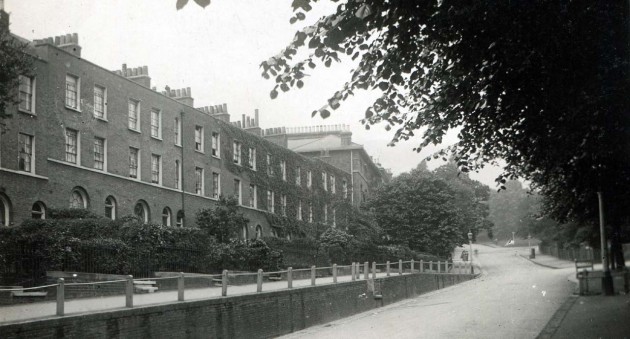
Built in about 1820 and originally known as Dartmouth Terrace, many of these houses on Lewisham Hill were damaged by a flying bomb which fell on 17 June 1944. All 20 houses in the terrace were subsequently demolished and replaced by a block of flats. Originally numbered consecutively from right to left (1–20), the houses were renumbered in the late 1800s. 20 Dartmouth Terrace became 1 Lewisham Hill, 19 Dartmouth Terrace became 3 Lewisham Hill and so on. The house on the left in the photo is 8 Dartmouth Terrace. Glaisher's house, number 13, was a few doors down, towards the bottom of the hill. Around 20 years after Glaisher moved out, the assistant, Arthur Downing, moved into number 12, the house next door. From a postcard published by S Phillips, Catford
Following Belville’s death in 1856, Glaisher rose from Third Assistant to Second, and his salary increased from £200 to £250. He received a further £50 increase in 1860, at which point his salary was just £50 less than the recently appointed First Assistant, Edward Stone. It is probably true to say that Glaisher’s salary awards were the most generous of any at the Observatory in the nineteenth century. Click here for a full breakdown of salaries and allowances from 1836–71.
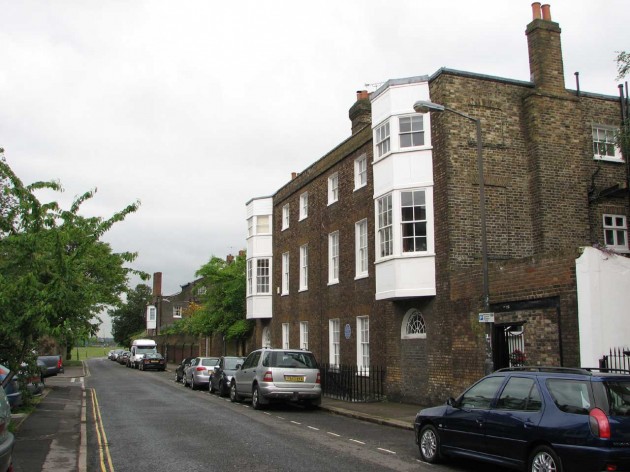
1 Dartmouth Place (now 20 Dartmouth Hill), Glaisher's home for over 30 years. He moved out in 1893. The open heath can be seen at the end of the road. The photo dates from 2012
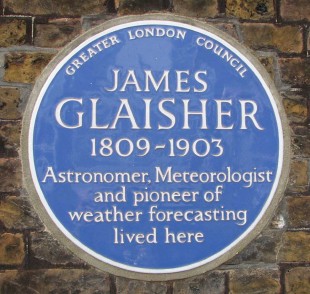
The Blue Plaque (erected in 1974 by the Greater London Council) on Glaisher's House in Dartmouth Hill
Following his departure, Glaisher was appointed a member of the royal commission on the warming and ventilation of dwellings in 1875 and from 1880 until 1891 acted as chairman of the executive committee of the Palestine Exploration Fund.
Glaisher was probably associated with more learned societies than any other member of staff in the Observatory’s entire history. He was made a fellow or the Royal Astronomical Society in 1841 and a fellow or the Royal Society in 1849. He was also the first President of the (Royal) Microscopical Society, President of the Royal Photographic Society and on the Council of the Royal Aeronautical Society. He also served three terms as President of the West Kent Scientific Society (1859, 1860–1861 & 1868–1869) and two as Vice-President of the Blackheath Photographic Soceity (1860 & 1861).
When he was in his 80s, Glaisher moved from Blackheath to a large house in Croydon (about a third of a mile from the Town Hall). Why he moved has yet to be discovered. Following his death in 1903, he was buried in the churchyard of St John the Evangelist, Shirley.
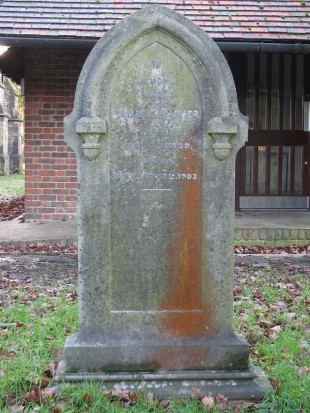
Glaisher's tombstone. The inscription reads: 'In Memory of James Glaisher Born April 7th 1809, Died February 7th 1903.' Photographed January 2016
Obituaries
By Willliam Carpenter Nash. The Observatory, Vol. 26, p. 129-132 (1903)
By William Ellis. Monthly Notices of the Royal Astronomical Society, Vol. 64, p.280 (1904)
Further reading
James Glaisher FRS (1809-1903) Astronomer, Meteorologist and Pioneer of Weather Forecasting: 'A Venturesome Victorian'. Hunt, J. L. Quarterly Journal of the Royal Astronomical Society, Vol. 37, p.315 (1996)
Travels in the Air. Glaisher, James, Camille Flammarion, W. de Fonvielle, and Gaston Tissandier. (London, 1871)
The Belville Family and the Royal Observatory, 1811–1939.Hunt J.L. A&G (1999) 40 (1): 1.23–1.27
© 2014 – 2025 Graham Dolan
Except where indicated, all text and images are the copyright of Graham Dolan
